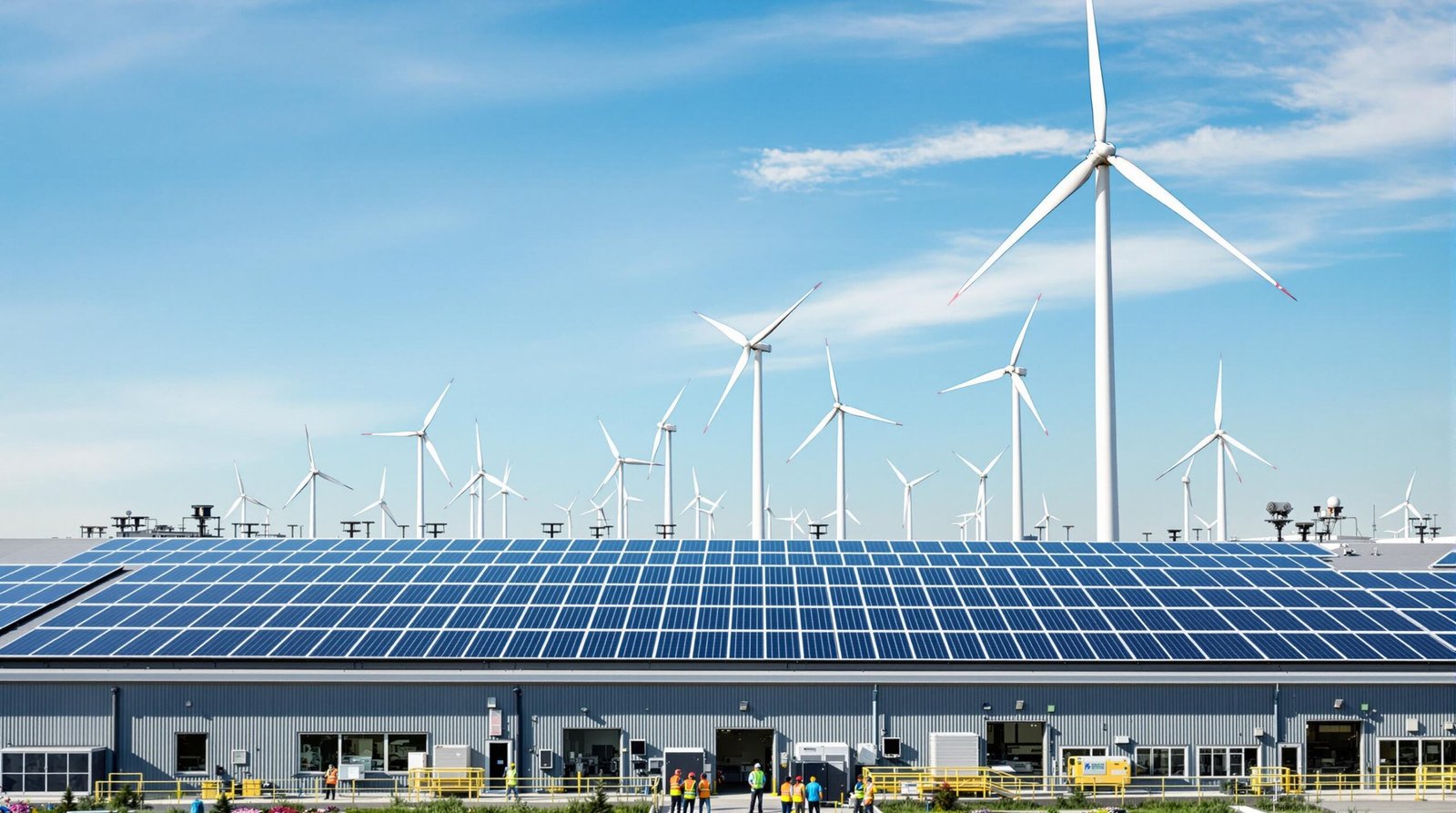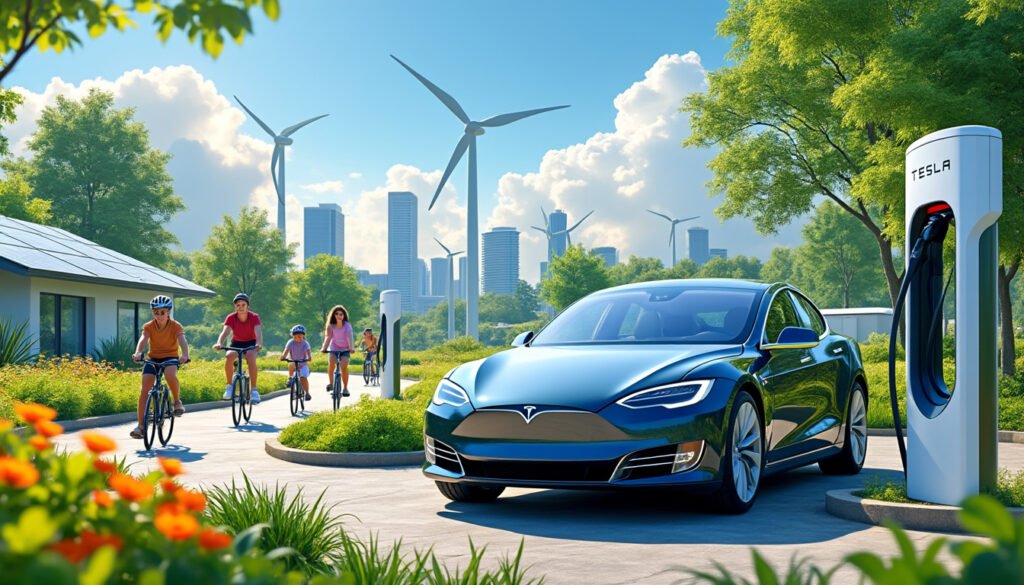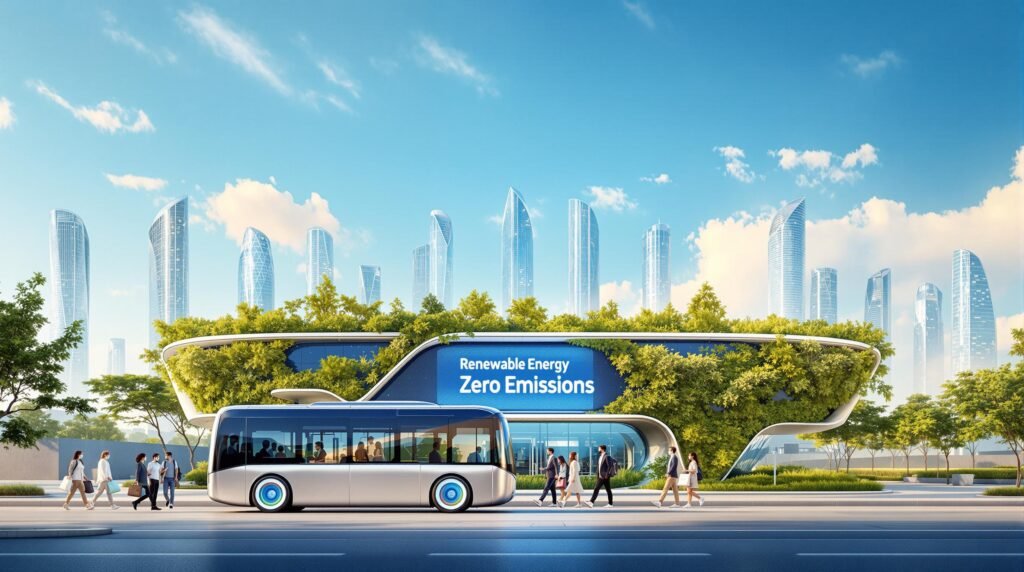Businesses face increasing pressure to address their carbon footprint, a challenge that often seems overwhelming. The impact of unsustainable practices not only jeopardizes the planet but also threatens the long-term viability of businesses. As organizations work to adapt, an effective decarbonization strategy is crucial for both environmental sustainability and corporate responsibility. This article provides comprehensive guidance on actionable steps businesses can take to significantly reduce their carbon emissions.
Achieving carbon neutrality is more than just a regulatory requirement; it is now a competitive imperative. Investors and consumers alike are prioritizing sustainability, meaning companies that fail to adapt may become obsolete. However, the challenges of implementing effective decarbonization strategies can often seem insurmountable. Awareness and practical knowledge are essential in guiding businesses towards achieving meaningful carbon reduction, making this article a vital resource.
Through understanding decarbonization strategies, businesses can transition to sustainable operations, optimize resource usage, and foster positive relationships with stakeholders. Accordingly, we will unpack the essential strategies for reducing carbon footprints and highlight the tools available for effective implementation.
Understanding Decarbonization: Its Importance and Impact
The concept of decarbonization refers to the process of reducing carbon emissions released into the atmosphere, primarily from fossil fuel consumption. It encompasses a wide range of practices, technologies, and initiatives aimed at promoting sustainability across entire supply chains. Understanding the importance of decarbonization in the context of global warming is paramount for businesses aiming to thrive in the modern world.
Why Decarbonization Matters
The consequences of climate change are becoming increasingly evident, making the need for decarbonization more urgent than ever. Here are some critical points to consider:
- Global Warming: Rising temperatures linked to greenhouse gas emissions lead to dangerous weather patterns, sea-level rise, and biodiversity loss.
- Regulatory Compliance: Governments around the world are introducing stringent regulations aimed at reducing carbon emissions. Non-compliance can result in significant penalties.
- Corporate Accountability: As consumers grow environmentally conscious, businesses must demonstrate their commitment to sustainability, or risk losing customer loyalty.
- Investment Attraction: Companies with robust sustainability strategies are often viewed favorably by investors. A clear commitment to decarbonization can enhance access to capital.
The Business Case for Decarbonization
Realigning business practices to prioritize sustainability yields numerous benefits. A few key advantages include:
- Cost Savings: Improving energy efficiency leads to lower operational costs and improved margins.
- Reputation Enhancement: Businesses committed to sustainability are perceived positively, enhancing brand loyalty among eco-conscious consumers.
- Market Differentiation: By embracing sustainability, organizations can tap into new consumer segments seeking eco-friendly products and services.
- Innovation: Decarbonization drives creativity and innovation as businesses seek new solutions and technologies for reducing emissions.
Global Trends in Decarbonization
Businesses worldwide are recognizing the pressing need to decarbonize and are implementing various measures. Some emerging global trends include:
- Investment in Renewable Energy: Companies are investing in solar, wind, and other renewable sources to replace fossil-fuel-based energy.
- Emphasis on ESG Standards: Environmental, Social, and Governance (ESG) criteria are gaining traction. Companies are integrating these benchmarks into decision-making to assess sustainability risks.
- Focus on Circular Economy: More businesses are adopting circular economy principles, aiming to reduce waste and encourage sustainable consumption.
- Collaboration: Partnerships between businesses, governments, and NGOs are becoming more common to foster collective action towards sustainability goals.

Steps for Businesses to Develop Effective Decarbonization Strategies
Creating a sustainable decarbonization strategy requires a structured approach that aligns with the business’s operational realities. Here are key steps businesses can undertake to develop an effective strategy:
Step 1: Assess Current Carbon Footprint
The first step in any decarbonization strategy is to understand the current state of your carbon emissions. An effective carbon inventory outlines:
- Emission Sources: Identify all sources of greenhouse gas emissions, including direct emissions from company operations and indirect emissions through the supply chain.
- Measurement Methodologies: Employ tools and frameworks like the GHG Protocol to measure emissions accurately.
- Benchmarking: Compare emissions metrics against industry standards and regional averages to understand areas for improvement.
Step 2: Set Clear and Achievable Goals
Goal setting is a critical aspect of implementing effective decarbonization strategies. When defining objectives, consider the following:
- Short-term vs. Long-term Goals: Establish both immediate goals (e.g., 5-year targets) and long-term aspirations (e.g., 2040 net-zero goals).
- Specificity: Goals should be measurable, attainable, relevant, and time-bound (SMART criteria).
- Transparency: Clearly communicate goals to all stakeholders, aligning everyone towards a common vision.
Step 3: Identify and Implement Decarbonization Levers
Decarbonization levers are specific strategies and initiatives that businesses can use to reduce emissions. Key levers include:
- Energy Efficiency Improvements: Analyze operations to identify opportunities for energy saving technologies.
- Renewable Energy Adoption: Transition to renewable energy sources by purchasing green energy or investing in solar/wind installations.
- Alternative Fuels: Shift from conventional fossil fuels to sustainable alternatives, such as biofuels and hydrogen.
- Sustainable Materials: Incorporate low-carbon materials in production processes and products.
Step 4: Engage Stakeholders and Train Employees
Active engagement with key stakeholders, including both staff and external partners, is vital for successful implementation. Steps include:
- Training Programs: Provide ongoing learning opportunities to educate employees about sustainability practices and emissions reduction efforts.
- Collaborative Initiatives: Foster communication among teams to encourage idea generation and support for emerging sustainability practices.
- Incentives: Implement incentive programs that reward teams for achieving sustainability targets, driving motivation and engagement.
| Decarbonization Lever | Benefits | Challenges |
|---|---|---|
| Energy Efficiency Improvements | Cost reduction, reduced power consumption | Upfront investment in technology needed |
| Renewable Energy Adoption | Reduced dependency on fossil fuels, lower long-term costs | Initial implementation costs and infrastructure changes |
| Alternative Fuels Usage | Lower carbon emissions, potential for waste reduction | Supply chain adjustments needed |
Monitoring and Reporting Progress on Decarbonization
Monitoring the effectiveness of implemented decarbonization strategies is crucial for continuous improvement. Establishing a robust reporting framework allows organizations to:
Step 5: Establish Key Performance Indicators (KPIs)
KPIs provide measurable targets that enable organizations to track performance. A few common KPIs related to carbon emissions reduction include:
- Emissions Reduction Percentage: Measure the percentage decrease in emissions over a specific time frame.
- Energy Consumption: Track energy use in comparison to targets, identifying scores of improvement.
- Waste Reduction: Monitor waste generation levels to evaluate sustainability practices effectively.
Step 6: Utilize Digital Tools and Technologies
Leveraging technology can enhance emissions tracking and resource optimization. Solutions such as:
- Carbon Management Software: Digital platforms help gather and analyze emissions data, improving transparency and accountability.
- IoT Sensors: Smart sensors can track energy usage and emissions in real-time, providing actionable insights.
- Blockchain Technology: Blockchain facilitates transparency in supply chains, ensuring sustainable practices across the entire network.
Step 7: Regular Review and Adjustment of Strategies
Continuous evaluation allows businesses to pivot and adjust their strategies based on lessons learned. Steps to ensure relevance include:
- Annual Reviews: Regularly assess progress against nitial goals and make adjustments as necessary.
- Incorporate Feedback: Incorporate feedback from employees and stakeholders to refine decarbonization strategies.
- Adapt to Regulatory Changes: Stay informed of evolving regulations regarding emissions and sustainability reporting to ensure compliance.

Case Studies in Successful Decarbonization
Examining the experiences of businesses that have successfully implemented decarbonization strategies can provide valuable insights. Here are two inspiring examples:
Case Study 1: Toyota’s Carbon-Reduction Roadmap
Company Overview
Toyota, one of the world’s largest automotive manufacturers based in Japan, has been recognized for its pioneering efforts in sustainable mobility.
Strategies Implemented
- Hybrid and Electric Vehicles (EVs)
- Toyota was among the first to mass-produce hybrid cars (e.g., the Prius) to reduce tailpipe emissions.
- The company continues to expand its lineup with fully electric and plug-in hybrid models to further cut carbon output.
- Hydrogen Fuel Cell Technology
- Toyota introduced the Mirai, one of the first commercially available hydrogen fuel cell vehicles, showcasing a zero-emissions alternative to traditional cars.
- Hydrogen research and infrastructure development form a core part of Toyota’s long-term decarbonization plan.
- Green Manufacturing
- Through “lean manufacturing” techniques and continuous improvement (Kaizen), Toyota has optimized its production processes to use less energy and generate less waste.
- Investments in energy-efficient equipment and the adoption of renewable energy (like solar panels on manufacturing plants) further reduce operational emissions.
- Sustainability Partnerships
- Toyota collaborates with governments, energy providers, and other automotive players to develop hydrogen refueling stations and battery supply chains, aiming to make low-carbon technologies more accessible.
Results
- Significant reduction in fleet-wide CO₂ emissions due to widespread adoption of hybrid models.
- Strengthening of Toyota’s brand image as an innovator in sustainable transportation.
- Long-term commitment to achieving net-zero emissions across the company’s product lifecycle by 2050.
Case Study 2: TSMC’s Green Foundries
Company Overview
Taiwan Semiconductor Manufacturing Company (TSMC) is the world’s largest dedicated semiconductor foundry, supplying chips to major technology brands worldwide.
Strategies Implemented
- Renewable Energy Procurement
- TSMC has made large-scale investments in solar and wind power projects in Taiwan.
- By signing long-term power purchase agreements (PPAs), TSMC secures a stable supply of green electricity, reducing its dependency on fossil fuels.
- Energy-Efficient Production
- The semiconductor manufacturing process is energy-intensive. To address this, TSMC has adopted advanced energy management systems and more efficient cleanroom designs.
- Continuous optimization of manufacturing equipment and processes helps minimize energy wastage.
- Water Recycling Initiatives
- Recognizing that chip fabrication requires large volumes of water, TSMC has built state-of-the-art water recycling facilities.
- These systems significantly reduce freshwater consumption and ensure minimal environmental impact.
- Supplier Engagement
- TSMC collaborates with its suppliers to develop and adopt eco-friendly materials, packaging, and logistics solutions.
- Regular audits and sustainability scorecards encourage suppliers to align with TSMC’s low-carbon objectives.
Results
- A growing percentage of TSMC’s operations run on renewable energy, bringing the company closer to its net-zero targets.
- Reduced operational costs over time, thanks to energy and water efficiency measures.
- Enhanced global reputation for responsible production among major tech clients and investors.
Lessons Learned from the Case Studies
- Holistic Approach
- Both Toyota and TSMC address emissions across their entire value chain—product design, manufacturing, and supply chain.
- Innovation and Technology
- Fuel cell vehicles, advanced semiconductor manufacturing processes, and large-scale renewable energy adoption highlight the importance of R&D in driving decarbonization.
- Collaborations and Partnerships
- Working with governments, suppliers, and other stakeholders accelerates the transition to low-carbon technologies and infrastructure.
- Long-Term Commitment
- Achieving meaningful reductions in CO₂ emissions requires sustained investment and a strategic roadmap tied to clear, measurable goals.
The Future of Decarbonization in Business
The need for businesses to reduce their carbon footprint will only grow as the impacts of climate change become more pronounced. This requires an adaptable and agile approach to decarbonization strategies that can evolve in response to emerging technologies, regulatory frameworks, and market demands.
Innovations on the Horizon
The future of decarbonization may include:
- New Green Technologies: Innovations in carbon capture and storage, biofuel generation, and other green technologies will play a vital role.
- Policy Advocacy: Proactive measures may include lobbying for government incentives and support for greener practices.
- Increased Transparency: Enhanced reporting and transparency for emissions data will be expected from consumers and regulatory bodies alike.
The Importance of Collaboration
Decarbonization efforts are likely to be more successful when businesses collaborate across industries. Cross-industry partnerships can lead to:
- Shared best practices and resources.
- Collective innovations in technology and materials.
- Stronger advocacy for favorable policies and standards.
Tools and Resources for Decarbonization
Utilizing a variety of tools and resources can significantly enhance the effectiveness of decarbonization strategies. Here are some categories of tools worth exploring:
Monitoring and Reporting Tools
- Carbon Footprint Calculators: Assess your organization’s emissions using online tools to set benchmarks.
- Environmental Management Systems: Implement a comprehensive EMS to monitor environmental performance.
- Software Solutions: Platforms like Sweep provide customizable tools for tracking and managing carbon footprints.
Industry-Specific Guidelines and Frameworks
- GHG Protocol: Provides standards for companies to measure and manage emissions.
- ISO 14001: International standards for environmental management systems.
- Science-Based Targets Initiative: Offers guidance for companies to set science-based emissions reduction targets.
Networking and Collaboration Platforms
- Professional Associations: Join industry groups focused on sustainability for peer support and resources.
- Collaborative Initiatives: Participate in forums and projects that promote collective efforts towards decarbonization.
- Innovation Networks: Engage with start-ups and innovators to explore new technologies in sustainability.






